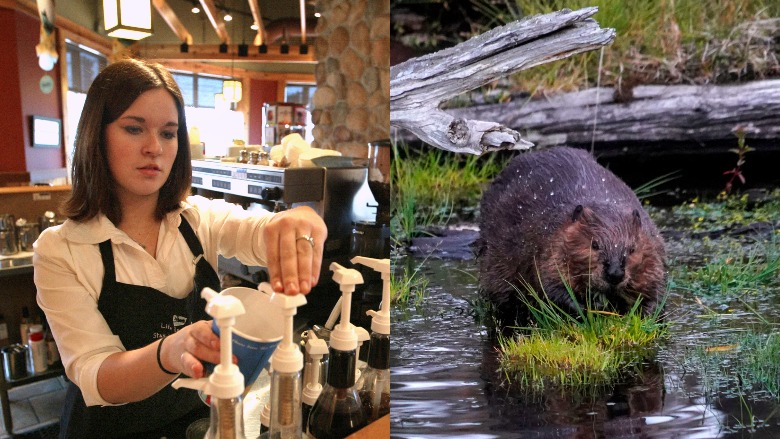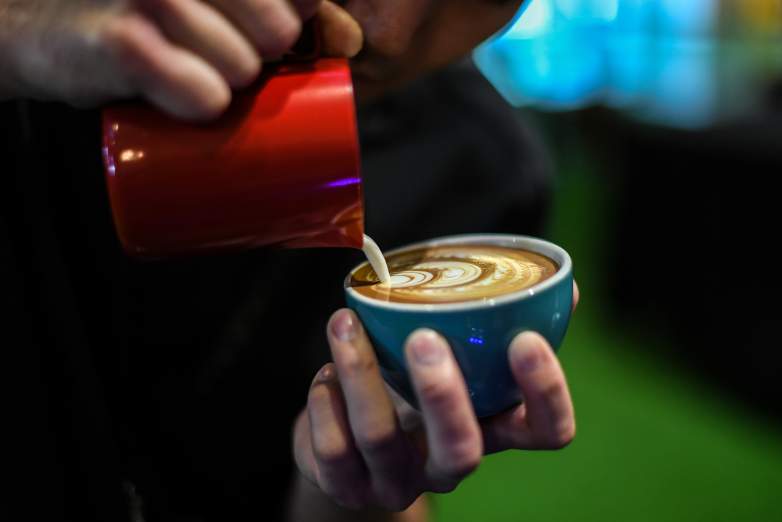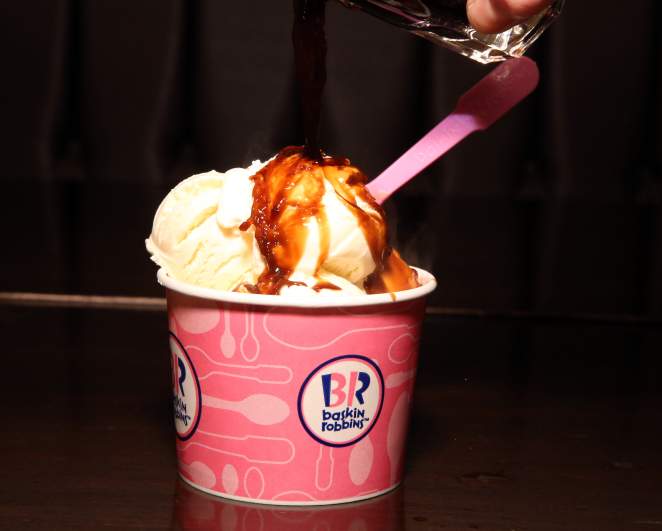
Getty TikTok users wonder about the true origins of vanilla flavoring after information linking it to beaver secretions is found online.
TikTok users are freaking out about the true origin of one of their most favorite coffee flavors after user Sloowmoee posted a video of himself drinking a vanilla latte, and after searching where the taste comes from online, screaming, “NO MORE VANILLA!”
Afterward, Sloowmoee asks for other users to “Record yourself before and after googling ‘where does vanilla flavoring come from?'” in a video that has since been viewed over 100,000 times.
Among the top results for a Google search for the question is a 2013 National Geographic story titled, “Beaver Butts Emit Goo Used for Vanilla Flavoring” — castoreum, a thick brown secretion that, “because of its close proximity to the anal glands … is often a combination of castor gland secretions, anal gland secretions, and urine.” The secretion “has a musky, vanilla scent, which is why food scientists like to incorporate it in recipes,” according to the magazine.
But before you spit out your delicious vanilla-flavored coffee, Snopes reported in 2013 that “the typical consumer is unlikely to ever encounter castoreum in food.”
Does Vanilla Flavoring Come From Beavers’ Anal Secretions? No

GettyA participant takes part in the Battlefield of the Best Pour Latte Art competition in Kuala Lumpur on April 20, 2017.
Castoreum is “a classy, antique-sounding word … stands for all of the bizarre, filthy, and perverse things that ‘they,’ the corporate monsters of processed snacks, are doing to your food,” according to Nadia Bernstein, a historian who wrote about the topic for Vice. But what is it and what is it used for?
Bernstein wrote in 2018 that castoreum comes from castor sacs located next to the anal glands, and “the yellowish oily fluid in the castors gets its fragrance from plant compounds concentrated from beavers’ wild diets. It’s basically beaver-made herbal essences.”
While smelling a beaver’s butt sounds like a bad idea, Joanne Crawford, a wildlife ecologist at Southern Illinois University, told National Geographic: “I lift up the animal’s tail. I’m like, ‘Get down there, and stick your nose near its bum.’ People think I’m nuts. I tell them, ‘Oh, but it’s beavers; it smells really good.’”
According to National Geographic, because castoreum is difficult to procure — the beavers must be anesthetized and their castor sacs “milked” — it isn’t commonly used in foods today.
“It’s rare you’ll find beaver-derived vanilla in any of your food today. This type is used primarily in fragrances for things like lotion and candle wax,” Natural Force reported.
The Real Reason We Stopped Using Natural Castoreum in Food & Drinks

GettyAffogato is an Italian delicacy that includes hot espresso poured over cool vanilla ice cream.
In the early 20th century, castoreum was used by flavor-makers and perfume-makers, and by the 1960s, castoreum could be regularly found in drinks, cakes, ice cream, candy and chewing gum, Bernstein wrote in her Vice essay. Cigarette companies such as Phillip Morris and Camel dusted their tobacco with dried castoreum to give it a more luxurious aroma.
The amount used in flavors like strawberry and vanilla was negligible, intended to enhance rather than create the flavor, according to Bernstein. Castoreum was never used as the main ingredient but helped bring out the depth of flavors found in food.
Over time, however, natural castoreum was replaced by synthetic materials because it wasn’t kosher. Bernstein said, “If food companies wanted to earn the rabbinical seal of approval, any traces of castoreum in flavorings had to be nixed.”
READ NEXT: Ivana Trump Reacts to Election Results: Donald ‘Hates Being a Loser’
